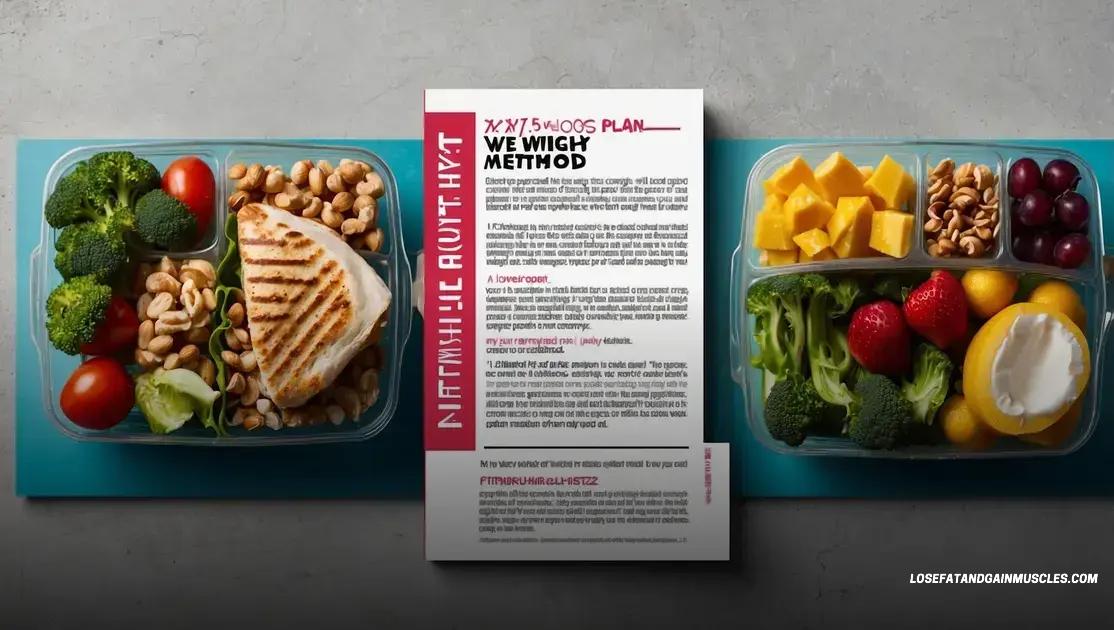Does Lifting Weights Burn Belly Fat? Find Out the Truth Now!
Lifting weights effectively burns belly fat by increasing muscle mass and boosting your metabolism. Incorporating a consistent weight lifting routine alongside cardio and a balanced diet can lead to significant fat loss, including in the abdominal area, resulting in a healthier body composition.
Does lifting weights burn belly fat? This question intrigues many fitness enthusiasts and those looking to shed excess weight. Weight lifting has become a key component in many workout regimes. In this post, we’ll delve into the science behind weight training and its effectiveness in targeting belly fat. We will explore how weight lifting can contribute to overall fat loss, the difference between strength training and cardio, and provide practical tips for maximizing results.
Understanding Weight Lifting and Fat Loss
Understanding how weight lifting contributes to fat loss is essential for anyone aiming to shed excess body weight. When you lift weights, your body burns calories during the workout, but the real benefits come from what happens afterward. After weight training, your metabolism remains elevated, leading to ongoing calorie burning, even at rest.
Muscle Mass and Metabolic Rate
Building muscle through weight lifting increases your resting metabolic rate. This means that the more muscle you have, the more calories you burn throughout the day. It’s a crucial aspect to consider when thinking about belly fat loss, as increased muscle mass can help target fat in stubborn areas.
Fat Burning Process
Weight lifting promotes a process called afterburn or excess post-exercise oxygen consumption (EPOC). This phenomenon boosts the calories burned even after you finish your workout. In essence, when lifting weights, you not only burn calories during the session but also continue to burn them long after you’ve left the gym.
Combining Weight Lifting with Diet
For optimal fat loss, it’s important to combine weight lifting with a nutritious diet. Focusing on high-protein foods can help preserve muscle mass while promoting fat loss. A balanced diet rich in whole foods, including fruits, vegetables, and lean proteins, aids in maximizing the benefits of your lifting regimen.
Consistency is Key
Lastly, maintain consistency with your weight lifting routine. Regular workouts are essential for seeing results over time. Incorporate different exercises that target multiple muscle groups for a comprehensive approach to fat loss.
How Weight Lifting Affects Belly Fat

Many people wonder how weight lifting affects belly fat. While spot reduction is a myth, weight lifting can help target overall fat loss, including in the abdominal area. When you do weight lifting exercises, your body uses energy, and this process helps burn calories.
Reducing Overall Body Fat
To lose belly fat, you need to reduce overall body fat percentage. Weight lifting contributes to this by increasing muscle mass. More muscle means a higher resting metabolic rate, which leads to more calories burned even while you are not exercising.
Hormonal Changes
Weight lifting also promotes beneficial hormonal changes. When you lift weights, your body releases hormones like growth hormone and testosterone that play key roles in fat loss. These hormones help your body burn fat more efficiently, including belly fat.
High-Intensity Training
Incorporating high-intensity training such as circuit training or supersets can elevate your heart rate during workouts. This, in turn, boosts your overall calorie burn and can be effective in reducing belly fat.
Consistency and Patience
It’s important to remember that consistent weight lifting is key to seeing results. While immediate changes may not be visible, over time, you will start to notice reductions in belly fat as long as you follow a balanced diet and maintain a consistent workout routine.
Integrating Cardio with Weight Training
Combining weight lifting with cardiovascular exercise can provide even better results for belly fat loss. Cardio helps burn calories directly during the activity, while weight lifting helps build muscle and boosts your metabolism in the long run.
Comparing Cardio and Weight Training
When it comes to fitness, many people wonder about comparing cardio and weight training for fat loss. Both forms of exercise have unique benefits and can be effective in different ways. Understanding their differences can help you create a balanced workout routine.
Cardio Training
Cardiovascular exercise includes activities like running, cycling, or swimming. These exercises primarily focus on increasing your heart rate and burn calories during the session. Cardio sessions typically help in losing weight quickly, especially in the initial stages of a fitness journey.
Weight Training
On the other hand, weight training builds muscle and enhances strength. Although it may burn fewer calories during the workout compared to cardio, it leads to higher calorie expenditure post-exercise due to the afterburn effect. This can be beneficial for long-term weight management.
Calories Burned
Generally, cardio burns more calories in a shorter time. For example, a 30-minute session of running may burn more calories than the same amount of time lifting weights. However, weight training’s ability to build muscle increases your metabolism, resulting in more calories burned throughout the day.
Muscle Preservation
Weight training is particularly important for preserving muscle mass while losing weight. When you lose weight through cardio alone, you may also lose muscle, which can slow your metabolism over time. Combining both cardio and strength training can help retain muscle and reduce body fat effectively.
Overall Health Benefits
Both forms of exercise offer health benefits beyond fat loss. Cardio improves heart health, enhances endurance, and lowers stress levels. Weight training strengthens bones, increases flexibility, and improves overall functional strength. A balanced approach incorporating both can maximize benefits.
Real-Life Success Stories

Real-life success stories can inspire many people to start their fitness journey. One such story is of Sarah, who struggled with stubborn belly fat for years. After trying various diets and cardio routines without success, she decided to incorporate weight lifting into her regimen. Within six months, she lost over 20 pounds and significantly reduced her waist size. Her newfound strength and confidence encouraged her to continue.
John’s Transformation
Another impressive example is John, a busy professional who found it hard to fit exercise into his routine. He started a program combining weight lifting and high-intensity interval training (HIIT) three times a week. Over a year, John not only lost 30 pounds but also developed strong muscles, turning the focus from just losing weight to building strength.
Maria’s Journey
Maria, a mother of three, wanted to regain her pre-pregnancy body. She faced challenges like lack of time and motivation. With the help of a personal trainer, she began lifting weights twice a week and focused on her diet. Months later, Maria discovered a leaner physique, less belly fat, and a positive attitude toward fitness.
Tom’s Approach
Tom, a college student, was previously inactive and lacked energy. He started lifting weights alongside cardio. He noticed how lifting improved not only his body but also his mental health. Today, Tom has transformed into an active individual who enjoys both strength and endurance workouts, boosting his overall well-being.
The Common Thread
These stories reflect a common thread: consistency and dedication to weight lifting can lead to remarkable changes. Whether the goal is to lose belly fat, build muscle, or improve overall health, real-life examples show how lifting weights can make a significant difference in people’s lives. Embracing strength training offers a path to achieving fitness goals.
Tips for Effective Weight Lifting
To achieve the best results from your workouts, consider these tips for effective weight lifting. Following proper techniques and guidelines is essential for maximizing fat loss and building muscle.
1. Start with a Warm-Up
Before lifting weights, always begin with a warm-up. Light cardio, such as brisk walking or cycling, warms up your muscles and prepares your body for exercise. A good warm-up increases blood flow and reduces the risk of injuries.
2. Focus on Form
Proper form is crucial when lifting weights. Good technique not only ensures maximum effectiveness but also minimizes injury risk. If you’re unsure about your form, consider working with a trainer or watching instructional videos to learn the correct techniques.
3. Set Realistic Goals
Establish clear and achievable fitness goals. Whether you want to lose belly fat, build strength, or increase endurance, having specific targets keeps you motivated. Track your progress to see how you’re improving over time.
4. Incorporate Variety
Variety in your weight lifting routine is vital. Mix different exercises, equipment, and formats to keep your workouts fresh and engaging. Targeting various muscle groups improves overall strength and helps prevent boredom.
5. Don’t Skip Rest Days
Rest days are essential for muscle recovery. Allow your muscles time to heal and grow stronger between weightlifting sessions. This helps prevent burnout and overtraining, which can hinder your progress.
6. Stay Hydrated and Nourished
Hydration and nutrition play a significant role in your lifting performance. Drink plenty of water before, during, and after your workouts. Eating a balanced diet that includes protein, healthy fats, and carbohydrates supports muscle growth and fat loss.
7. Listen to Your Body
Finally, always listen to your body. If you feel pain or extreme fatigue, consider reducing intensity or taking a break. It’s essential to balance pushing your limits while avoiding injury.
In Conclusion: Does Lifting Weights Really Burn Belly Fat?
Weight lifting is an effective strategy for burning belly fat and achieving overall fat loss. By understanding how weight lifting affects your body and incorporating it into your fitness routine, you can improve your metabolism, build muscle, and achieve your weight loss goals.
Success stories show that many individuals have transformed their bodies and lives by committing to weight lifting. Whether you combine it with cardio or focus on strength training, the benefits are clear.
Implementing effective weight lifting techniques and following essential tips is crucial for maximizing results. Remember, it’s not just about lifting weights but also about maintaining proper form, setting realistic goals, and ensuring recovery time.
Start your journey today, and embrace the power of weight lifting to transform not only your body but also your overall health and well-being.
FAQ – Frequently Asked Questions about Weight Lifting and Belly Fat Loss
Does lifting weights help burn belly fat?
Yes, lifting weights can increase your metabolism, build muscle, and promote overall fat loss, including belly fat.
How often should I lift weights to lose belly fat?
Aim to lift weights at least 2-3 times a week while incorporating cardio exercises for best results in fat loss.
Can I target belly fat specifically with weight lifting?
While you cannot spot-reduce fat, strength training helps reduce overall body fat, including in the belly area.
What is the best way to combine cardio with weight lifting?
Incorporate both forms of exercise in your routine by alternating days or combining them in the same workout for optimal results.
Do I need to change my diet while lifting weights?
Yes, a balanced diet rich in protein and healthy foods supports muscle growth and fat loss, enhancing the benefits of weight lifting.
Is it important to rest between weight lifting sessions?
Absolutely! Giving your muscles time to recover is crucial for muscle growth and preventing injuries.













